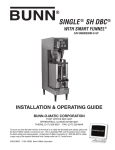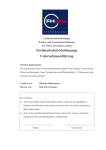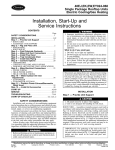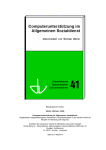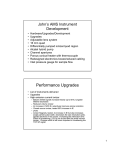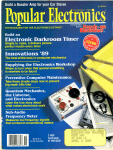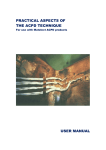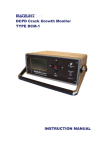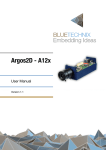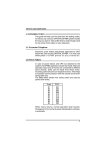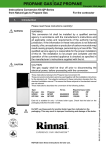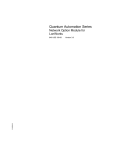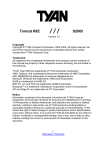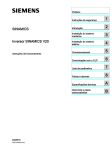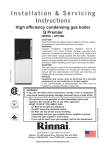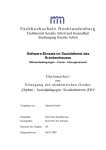Download Interactive comment on “Cloud condensation nuclei in
Transcript
Atmos. Chem. Phys. Discuss., 9, S2864–S2876, 2009
www.atmos-chem-phys-discuss.net/9/S2864/2009/
© Author(s) 2009. This work is distributed under
the Creative Commons Attribute 3.0 License.
Atmospheric
Chemistry
and Physics
Discussions
ACPD
9, S2864–S2876, 2009
Interactive
Comment
Interactive comment on “Cloud condensation
nuclei in pristine tropical rainforest air of
Amazonia: size-resolved measurements and
modeling of atmospheric aerosol composition and
CCN activity” by S. S. Gunthe et al.
S. S. Gunthe et al.
Received and published: 6 August 2009
We thank Anonymous Referee #1 for the review and constructive suggestions for improvement of our manuscript. Detailed responses to the individual comments are given
below.
Printer-friendly Version
Referee Comment 1:
Interactive Discussion
This manuscript combines measurements of CCN with size distributions and chemistry
to derive hygroscopicity parameters for Amazonia aerosols and demonstrates a unique
method of calculating the kappa hygroscopicity parameter using inorganic and organic
S2864
Full Screen / Esc
Discussion Paper
contributions measured by an AMS. The manuscript presents a thorough analysis and
the efforts to quantify the errors associated with the measurements are commendable.
Nonetheless, the manuscript seems present all of the analyses instead of synthesizing
the results for the reader. If my comments can be successfully addressed, I recommend the manuscript for publication.
Response:
We will try to improve the synthesis of results in the revised manuscript, although we
think that the abstract and the summary and conclusions section of our discussion
paper had already provided a fairly concise synthesis of our results. Following up
on the suggestions given in the second interactive comment posted by Referee #1
("addendum") and below, we will also reduce the number of figures in the manuscript
and online supplement. Note, however, that we consider it good scientific practice to
present all relevant data, aspects and steps of our analyses. We are aware that short
papers presenting little detail tend to attract less criticism, but we prefer presenting
our work in a comprehensive format on which interested colleagues can build without
guessing.
ACPD
9, S2864–S2876, 2009
Interactive
Comment
Referee Comment 2:
In this work, the authors clearly show that once an average chemical effect (or hygroscopicity factor) has been determined (by the AMS, for example), then aerosol particle
number and size are the major predictors for the variability. This is further corroborated
by Fig. 15, which shows relatively poor agreement between effective hygroscopicity
parameters determined from integral AMS measurements and those determined by
the CCN measurements. Subsequently, the conclusions drawn by the authors (P3814;
L5 & P3840; L24) should be reworded to reflect these results more accurately,
rather than simply stating that particle number and size are the major predictors for the
CCN variability.
Response:
S2865
Full Screen / Esc
Printer-friendly Version
Interactive Discussion
Discussion Paper
Based on the results of this study and numerous earlier studies, we are very confident that the general conclusions drawn on p. 3814, l. 5 and p. 3840, l. 24 are valid
and need not be reduced to more specific statements about our measurement results
(which are anyhow also included in the manuscript text). As demonstrated in our paper as well as in numerous earlier papers referenced in ours, the influence of varying
chemical composition and effective hygroscopicity of aerosol particles on the number
concentration of CCN in continental boundary layer air is generally smaller than the
influence of varying aerosol particle number concentration and size. The conclusions
drawn on p. 3814, l. 5 and p. 3840, l. 24 are based on the following statement from p.
3833, l. 28:
"Clearly, the calculation of CCN number concentrations with kappa = 0.3 cannot capture the short-term variability and leads to a systematic overprediction in the investigated tropical rainforest environment with very high proportion of organic particulate
matter (Sect. 3.3) and correspondingly low effective hygroscopicity of the aerosol particles. Nevertheless, we consider it remarkable that a constant global average effective
hygroscopicity parameter of kappa =0.3 (Andreae and Rosenfeld, 2008; Pöschl et al.,
2009a) enables the prediction of CCN number concentrations from aerosol particle
number size distributions over a range of four orders of magnitude (N_CCN,S = 10ˆ4
cm-3) going from pristine tropical rainforest air to highly polluted mega-city regions
(Rose et al., 2008b) with relative deviations exceeding ˜50% only at very low water
vapor supersaturations (˜0.1%) and particle number concentrations (˜100 cm-3)"
We note that Referee #1 had no objections against this statement, which is essentially
equivalent to the conclusions drawn on p. 3814, l. 5 and p. 3840, l. 24. Accordingly,
we will try to clarify the latter in the revised version and we will add further references
to related studies supporting these general conclusions and messages (Feingold et al.,
2001: Feingold, 2003; Wang et al., 2008; Feingold and Siebert, 2009; Kreidenweis et
al., 2009; Reutter et al., 2009). To avoid further misunderstandings we will also add
the word "approximate" whenever we assume and refer to a global average effective
S2866
ACPD
9, S2864–S2876, 2009
Interactive
Comment
Full Screen / Esc
Printer-friendly Version
Interactive Discussion
Discussion Paper
hygroscopicity parameter of kappa = 0.3, which is and was of course always meant
to be a simple first-order approximation based on the currently available data (see
Andreae and Rosenfeld, 2008; Kreidenweis et al, 2009; and references therein).
With regard to the correlation between the effective hygroscopicity parameters derived
from AMS measurements and determined by CCN measurements, we refer to the
manuscript text on p. 3837-3838, in particular p. 3837, l. 26 and p. 3838, l. 19:
"In spite of the positive bias and low correlation of predicted vs. measured kappa, the
mean relative deviations between CCN number concentrations predicted on the basis
of kappa_p and the measurement values of N_CCN,S were mostly less than 20% at
S=0.19-0.82% (Table 4)."
ACPD
9, S2864–S2876, 2009
Interactive
Comment
"Overall, the results of the present study confirm that integral AMS measurement data
are useful for the prediction of CCN number concentrations from CN size distributions.
Highly precise predictions, however, would require size-resolved AMS measurement
data of high precision, which are difficult to obtain at the low aerosol concentration
levels of pristine tropical rainforest air."
Again, our general conclusions are consistent with related studies referenced in the
manuscript, and we will add further references (e.g., Kuwata et al., 2008; Sorooshian,
2008; Wang et al., 2008; Shinozuka et al, 2009).
Referee Comment 3:
In reading the manuscript, it was not clear if the inorganic and organic fractions were
based solely on AMS measurements or if there were additional measurements of
aerosol mass to account for the refractory contributions not measured by the AMS.
Presumably if the total mass were measured (as a function of size), then k_p predictions would improve.
Response:
In several parts of the manuscript we have clearly stated that the organic and inorganic
S2867
Full Screen / Esc
Printer-friendly Version
Interactive Discussion
Discussion Paper
mass fractions used for analysis and parameterization of effective hygroscopicity parameters were determined by AMS (p. 3813, l. 20; p. 3837, l. 9; p. 3839, l. 12). In the
revised manuscript we will clarify this further (also in Sect. 2.4). Electron microscopic
investigations of filter samples collected during AMAZE-08 (Sinha et al., manuscript
in preparation) confirm that the concentrations of (potentially) refractory particles and
components like mineral dust, soot, and primary biological particles were negligibly
small (< 5%) in the particle size range for which the kappa values derived from AMS
and CCN measurements were not in good agreement (D <= 150 nm corresponding
to S >= 0.19%). As explained in our manuscript, the deviations between kappa values derived from AMS and CCN measurements can be attributed to the observed size
dependence of aerosol chemical composition (p. 3837, l. 21):
ACPD
9, S2864–S2876, 2009
Interactive
Comment
"The positive bias of kappa_p at high S is due to the enhanced organic mass fraction in
small particles and could be corrected on the basis of the average AMS size distribution
data (Figs. 3 and 12b), but further processing of the AMS data would go beyond the
scope of this study."
Referee Comment 4:
The authors need to clarify the statement that supersaturation values in publications
by Roberts and Andreae are 50% lower than reported nominal values (P3830; L1824).
This statement is likely incorrect as Roberts et al. conducted closure experiments
where independent calculations of CCN spectra agree with the measured CCN values. In addition, the references to Roberts et al. should be included in the section
"Comparisons with other studies"
Full Screen / Esc
Printer-friendly Version
Response:
Our statement concerning the supersaturation levels of the CCN measurements reported in Roberts et al. (2001, 2002) and Andreae et al. (2004) is based on the technical note of Frank et al. (2007), who calibrated the supersaturation in the applied CCN
counter (static thermal gradient chamber). However, since this issue is not crucial for
S2868
Interactive Discussion
Discussion Paper
our study, we intend to remove the questioned statement from the revised manuscript.
Moreover, we will include references to Roberts et al. (2001, 2002) in Sect. 3.1.3 of
the revised manuscript.
ACPD
9, S2864–S2876, 2009
Referee Comment 5:
Several examples of extra analyses include presentation of 2-parameter and 3parameter CDFs (and ’a’ & ’t’ subscripts), N20 and N30 concentrations, three observation periods, and a supplementary discussion that compares various single parameter calculations. While quantifying the sensitivity of different parameters is necessary, I suggest
describing the differences between the approaches (if they are relevant) and present
one parameter throughout the text for consistency. The 2 & 3-parameter CDFs are in
good agreement and certainly within the error of the measurements (p. 3818; L1825 & Fig 3); so it is not necessary to present both k_a and k_t throughout the en-tire
manuscript. I also suggest using N30 as the reference for number concentrations
throughout the text and drop parameters using N20. As stated by the authors, smaller
particles will not activate at the supersaturations measured here. It is also worth mentioning in the manuscript that 30 nm is the limiting case for a pure ammonium sulfate
particle at ˜0.8% supersaturation.
Interactive
Comment
Response:
Following the referee’s suggestion, we will remove N_CN,20 from most of the text and
tables. However, we intend to retain it in the methods section (Sect. 2.3), because
it is relevant for comparison with other particle number concentration measurements.
In the revised manuscript we will also note that 30 nm is the critical diameter for CCN
activation of pure ammonium sulfate particles at S ˜1% (Rose et al., 2008a).
With regard to the 2- and 3-parameter CDF fits and parameters we also understand
and share the referee’s view that unnecessary complexity should be avoided whenever simplifications are possible/appropriate. As mentioned in our manuscript and explained below, however, the parameters are not the same (neither conceptually nor
S2869
Full Screen / Esc
Printer-friendly Version
Interactive Discussion
Discussion Paper
numerically). They are differently suited for different purposes (comparison with AMS
and HTDMA data), and they lead to different results in the prediction of CCN concentrations by Köhler model calculations.
As specified on p. 3819, l. 21 (and similarly on p. 3823, l. 20), "kappa_a calculated from the data pairs of S and D_a characterizes the average hygroscopicity of
CCN-active particles in the size range around D_a. kappa_t calculated from D_t is an
approximate measure (proxy) for the effective hygroscopicity of mixtures of CCN-active
and -inactive particles in the size range around D_t (Rose et al., 2008b)."
ACPD
9, S2864–S2876, 2009
Interactive
Comment
Accordingly, kappa_t is better suited for comparison with average kappa values calculated from H-TDMA data (kappa_t,avg, Sect. 3.1.3). On the other hand, kappa_a
is better suited for comparison with kappa values predicted from AMS measurements
(kappa_p, Sect. 3.3), because kappa_a is not influenced by CCN-inactive particles
consisting mostly of insoluble and refractory materials like mineral dust and soot (or
biopolymers that tend to char upon heating) which are also not (or less efficiently) detected by AMS. We will try to clarify this aspect and include the above statement in the
revised manuscript (Sect. 2.2).
Please note that the error bars in Fig. 3 do not represent measurement errors but the
variability of effective hygroscopicity parameters as observed throughout the campaign.
As will be specified in the revised manuscript, the statistical uncertainties in the determination of midpoint activation diameters by curve fitting were on average ˜2-3 nm
(standard error of the corresponding CDF fit parameters), corresponding to relative uncertainties of ˜1-5% in activation diameter and ˜5-15% in the determination of kappa,
because the latter is inversely proportional to the third power of the critical diameter
of CCN activation (Petters and Kreidenweis, 2007; Kreidenweis et al., 2009). At low
supersaturations and large particle diameters (S ˜ 0.1 %, D_a ˜ 200 nm) the relative
uncertainty of the kappa values was on average of the same magnitude as the difference between kappa_a and kappa_t (˜ 5%). Thus, the difference between kappa_a
S2870
Full Screen / Esc
Printer-friendly Version
Interactive Discussion
Discussion Paper
and kappa_t was at the edge of being statistically significant. Nevertheless, it had
a noticeable systematic influence on the prediction of CCN concentrations by Köhler
model calculations (p. 3823, l. 24, p. 3832, l.27): the positive bias of the calculations increased by ˜50% (relative) when using kappa_a instead of kappa_t (from ˜10%
to ˜16%, Table 4). The observed differences between kappa_t and kappa_a and the
implications for the prediction of CCN concentrations are less pronounced but fully consistent with earlier investigations (Rose et al., 2008b). Therefore, we do not consider
the distinction of kappa_a and kappa_t as a key message of our paper and we have
kept it out of the abstract and the summary and conclusions section, but we still want
to keep it in the body of the text and report all parameters in the tables. We do not consider it good scientific practice to achieve conciseness of manuscripts at the expense
of completeness and precision.
ACPD
9, S2864–S2876, 2009
Interactive
Comment
Referee Comment 6:
The authors also need to update their reference list and check the order of the figures.
One reference is cited without a title (Chen et al.) and the manuscript cites a number
of articles that are in preparation or are not easily accessible (user manual and conference abstract). The reference (Frank et al., 2007) is also incorrectly cited (APCD vs.
ACP). In addition, the figures are not in sequential order in the text and some of them
are not even referenced in the manuscript. Editing the manuscript’s style should not be
required by the reviewers, but these oversights detract from its message.
Full Screen / Esc
Response:
We will update the reference list as suggested. Unlike indicated above and as confirmed by a second comment of Referee #1 ("addendum"), all figures are in sequential
order and are properly referenced in the manuscript.
Referee Comment 7:
Printer-friendly Version
Interactive Discussion
Discussion Paper
P3814; L10: The authors should use caution in extrapolating results from the Amazon
S2871
to rainforests in Africa which have different sources of aerosols (Artaxo, 1995; particularly, with respect to the much larger contribution of dust in Africa).
ACPD
9, S2864–S2876, 2009
Response:
We will restrict our statement to "pristine tropical rainforest aerosols of Amazonia".
Referee Comment 8:
P3814; L24: replace _absorb_ with _uptake_
Interactive
Comment
Response:
We will change the formulation to "ability to take up water vapor".
Referee Comment 9:
P3817; L5: Cite Rose et al., ACP, 2008 as well.
Response:
We will move the citation of Rose et al. 2008a from l. 6 to l. 4.
Referee Comment 10:
P3817; L22: Maximum difference of temperature between the optical particle counter
and the temperature of the bottom of the column should be stated as this is particularly
important for the measurements at low supersaturations.
Full Screen / Esc
Response:
The temperature difference was 2 K, which will be stated in the revised manuscript.
Printer-friendly Version
Referee Comment 11:
Interactive Discussion
Tables 1a and 1b contain the same information and need not be repeated. I suggest
condensing Table 1b (keeping the error analysis, but removing ’a’ or ’t’ and columns
related to N20) and removing Table 1a.
S2872
Discussion Paper
Response:
Following the referee’s suggestion, we will remove Table 1a from the manuscript text
and delete the N_CN,20 columns. However, because the median values are statistically more robust (less affected by short events of local pollution, etc.) and thus more
representative for the average conditions during the investigated periods (preferred by
many colleagues for model comparison), we intend not to delete Table 1a completely
but to move it to the online supplement (Table 1S). As explained above, we intend to
keep both the 3 parameter and the 2 parameter fit results (subscripts a and t) in the
table, because they do provide relevant complementary information.
ACPD
9, S2864–S2876, 2009
Interactive
Comment
Referee Comment 12:
P3827; L1-8: The authors should reference their choice of hygroscopic thresholds (or
describe how they determined the values of these thresholds).
Response:
Our choice of threshold values follows from the externally mixed particle groups and
corresponding effective hygroscopicity parameters reported by the referenced H-TDMA
studies as detailed in Table 2. The average effective hygroscopicity parameters were
generally < 0.1 for the lowest hygroscopicity group (VLH), and for the next higher
groups they were < 0.2 (LH) and < 0.4 (MH), respectively. Thus, the choice of the
threshold values 0.1 and 0.2 was very straightforward - it is the only possibility to represent the reported groups with simple (single decimal place) threshold numbers. The
preliminary choice of an upper threshold value for the MH group was based on the
observation that kappa values determined by CCN measurements at other continental
locations exceed the value of 0.4 much more frequently than the value of 0.5 (Rose
et al., 2008b). Upon re-considering this choice in view of the referee’s question, however, we conclude that it may be more reasonable to set the approximate upper limit of
the MH fraction 0.4 (corresponding to an ammonium sulfate equivalent soluble volume
fraction of ˜ 67%). As indicated above, the value of 0.4 follows directly from earlier
S2873
Full Screen / Esc
Printer-friendly Version
Interactive Discussion
Discussion Paper
studies of Amazonian aerosols. Higher threshold values such as 0.5 may eventually
turn out to be equally or more suitable, but for now we have no solid basis to propose
such values. Thus, we will revise definition of the kappa range for the MH particle
group in our study to ˜ 0.2-0.4, suggesting that it may be worthwhile for future studies to check and develop this or alternative classifications further. Key aspects of the
above paragraph will be included in the revised manuscript.
Referee Comment 13:
ACPD
9, S2864–S2876, 2009
Interactive
Comment
P3829; L9: The statement that coupling remote sensing measurements and kappa
values to predict CCN concentrations is tenuous as the size distributions from satellite
measurements are not detailed enough to predict CCN concentrations within the range
presented in this manuscript. This sentence should be removed.
Response:
We understand the referee’s concern, but we intend to retain this exploratory statement outlining the potential relevance of highly simplified formalisms for the description
of aerosol particle hygroscopicity and CCN activity in with regard to remote sensing and
related long-term/large-scale atmospheric research. To confirm the appropriateness of
this statement we intend to add references to recent studies and ongoing research activities addressing these issues (Andreae, 2009; Kinne, 2009; Shinozuka et al., 2009).
Referee Comment 14:
P3831; L13+: This classical power law approximation is not physically-based and
should in general be avoided. I suggest simply reporting the values for comparison
to older literature rather expanding a new section to include a modified power law approach.
Response:
We agree that reporting classical power law parameters serves mainly for comparison with older literature data. With regard to the relatively uniform integral CCN efS2874
Full Screen / Esc
Printer-friendly Version
Interactive Discussion
Discussion Paper
ficiency N_CCN,S/N_CN,30 found in this and earlier studies and discussed in Sect.
3.2.1 (p3830, l. 25), however, we consider it relevant to explore and characterize also
the applicability and limitations of the modified power law approach based on N_CN,30.
ACPD
9, S2864–S2876, 2009
Referee Comment 15:
P3833; L12: replace _little higher_ with a quantitative value
Response:
Interactive
Comment
Following the referee’s suggestion, we will add quantitative values based on Table 4
into the text of the revised manuscript.
Referee Comment 16:
P3852; Table 3: What is significant about the time period ’Rest of the campaign’? It
does not seem to present any new information here.
Response:
We agree that these parameters and other information concerning the "rest of the campaign" (not only in Tab. 3 but also in Tab. 1 and in Fig. 7) are not among the key results
and main messages of our manuscript. However, we consider this information as a natural complement to the parameters and information provided for the entire campaign
and for the focus period. We would like to remind the referee that our manuscript is
part of a fairly large field measurement campaign, and that other studies and collaborators will most likely want to use and refer not only to the entire campaign and to the
(pristine) focus period selected in our study but also to the (less pristine) "rest of the
campaign". We consider it easy and natural to provide quantitative information about
the average aerosol particle size distributions measured during the different measurement periods investigated and characterized in our study, and it would be fairly difficult
for readers to retrieve such information just from comparison of the entire campaign
and pristine period data. With all due respect for the referee’s intention of helping us
and future readers and users of our results to stay focused on the main messages, we
S2875
Full Screen / Esc
Printer-friendly Version
Interactive Discussion
Discussion Paper
do not understand why a couple of lines in a table reporting complementary information
rather than exciting new research highlights would do more harm than good. To our
knowledge, (Amazonian) aerosol particle size distribution data are fairly scarce in the
scientific literature but essential for any kind of atmospheric aerosol (model) study.
ACPD
9, S2864–S2876, 2009
P3853; Table 4:
The differences between k=0.147 and k=0.149 are insignificant; both columns are not
necessary.
Interactive
Comment
Response:
We will replace the two columns by one column with a rounded overall median value of
kappa = 0.15.
P3860; Fig. 5:
Figure 5 is not referenced. Remove figure or combine with Figure 3.
Response:
Unlike indicated by the referee, Fig. 5 was referenced and discussed at the end of
Sect. 3.1.2 (p. 3825, l. 14). Nevertheless, we will follow the referee’s suggestion and
include the data from Fig. 5 in Fig. 3.
P3865; Fig 10:
Remove figure (not referenced). Verify order and reference for all figures.
Full Screen / Esc
Response:
Printer-friendly Version
Unlike indicated by the referee, Fig. 10 was referenced and discussed in Sect. 3.2.2
(p. 3832, l. 2).
Interactive Discussion
To be continued (Part 2: References)
Discussion Paper
Interactive comment on Atmos. Chem. Phys. Discuss., 9, 3811, 2009.
S2876














